
Build Your Own Mechanical Keyboard… The RIGHT Way !
Within the pages of this article, we embark on an illuminating journey that delves into the intricate world of crafting a personalized mechanical keyboard. As we navigate this path, we unveil the artistry and engineering behind the keyboard customization process, shedding light on the myriad of design choices and meticulous component selections that pave the way to a truly unique and tailored typing experience.
At the heart of this exploration lies the concept of personalization—a notion that transforms the keyboard from a functional tool into an extension of one’s identity and preferences. As we delve into the design choices, we uncover the myriad possibilities that allow users to imprint their style, whether it’s through a specific colour scheme, intricate keycap designs, or even custom cases that exude individuality.
Yet the journey doesn’t stop at aesthetics. We delve into the realm of component selection, where every decision holds the power to influence the keyboard’s performance and feel. From the intricate selection of switches that determine tactile feedback and sound to the meticulous consideration of stabilizers that enhance keystroke consistency, every component contributes to the symphony of a customized typing experience.
As we progress, we navigate the intricate dance between form and function. Design choices and component selections intertwine, creating a harmonious equilibrium where aesthetics seamlessly blend with functionality. The result is a keyboard that not only reflects the user’s unique style but also caters to their specific typing preferences, ensuring every keystroke resonates with satisfaction.
Embarking on the road to customizing your mechanical keyboard starts with some initial considerations to lay the groundwork for your creative journey. As we delve deeper, we’ll reveal the key factors of budget allocation and keyboard design—two key pillars that influence the choices you make along the way and the final mechanical keyboard you end up with.
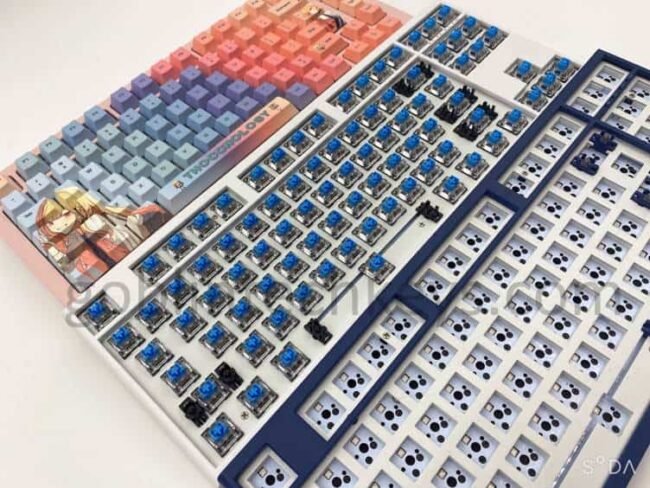
Budget Allocation
The most important consideration in your decision-making process is budget; this aspect determines the scope of your custom work. Whether you’re a novice or a seasoned enthusiast, defining your financial boundaries lays the groundwork for the components and features you can incorporate into your keyboard.
In this exploration, we explore the various possibilities that come with different budgets. From entry-level options that prioritize economy without compromising functionality to more liberal investments that buy premium switches, keycaps, and cases, every budget has found its place in the keyboard customization arena.
Keyboard Design Options
As you delve deeper into the world of personalized mechanical keyboards, a canvas of design choices opens up before you. It’s a landscape that caters to every taste, accommodating both the pragmatism of compact layouts and the grandeur of full-scale configurations.
The journey begins with layout considerations. The compact elegance of the 40% layout caters to minimalists who value space efficiency without sacrificing functionality. The full-size 104 keyboard, on the other hand, appeals to those who prefer a traditional layout complete with dedicated function keys, a number pad, and multimedia controls.
There are a tonne of options in between the two extremes: 60% of layouts blend compactness with basic keys, 75% balance space with convenience, and so on. Each selection provides a unique canvas for your customization, reflecting your practical needs and aesthetic sensibilities.
Navigating this world of design choices involves exploring not only layouts but form factors as well. Do you want the elegance of an understated keyboard or the touch of an understated case? The choice of keycap profile, switch type, and even the palette of keyboard components all contribute to your curated visual and tactile experience.
Ultimately, the journey of creating a personalized mechanical keyboard is both energizing and rewarding. The interplay of budget allocations and design choices shapes your canvas, influencing every subsequent decision you make. When you embark on a journey of self-expression and functionality, you’re not just making a keyboard; you’re making a keyboard. You’re building your own extension, a tool that blends aesthetics with utility and proves that innovation and individuality blend seamlessly.
As we embark on this journey of creating a personalized mechanical keyboard, we unveil a variety of keyboard sizes, each testifying to the versatility and personalization that this pursuit offers. As we delved deeper, we browsed common keyboard sizes, from the compact elegance of 60% to the functional aesthetic of TKL, and explored unique designs for specific preferences, such as Ortho, Alice, and Split layouts.
Common keyboard sizes
The world of keyboard customization is rife with options, and one of the first decisions you’ll encounter is the size of the canvas. At the forefront are familiar sizes – 60%, 65%, 75% and TKL (Tenkeyless) – each offering a unique balance of form and function.
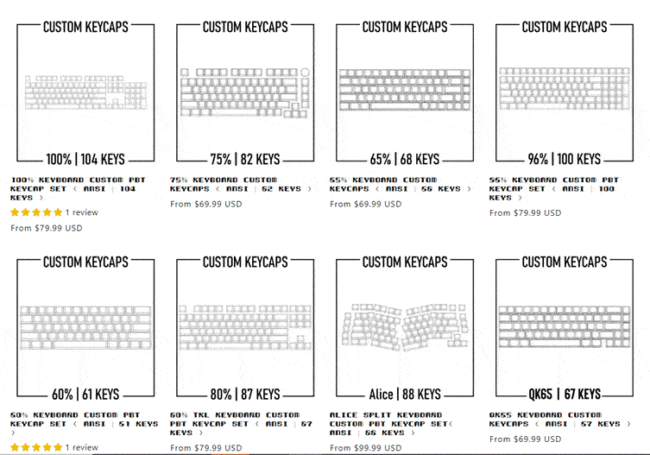
60% of the keyboard size, simple design, emphasizing efficiency and compactness. With just the bare essentials, it’s a top choice for those who prioritize a tidy workspace without sacrificing functionality.Moving up the size ladder, the 65% keyboard offers a slight extension, introducing arrow keys for enhanced navigation while maintaining a sleek footprint. Likewise, the 75% keyboard combines the compactness of the 60% layout with the convenience of dedicated arrow keys and additional function keys.TKL keyboards, on the other hand, keep the main alphanumeric part while doing away with the numeric keypad. It’s the perfect middle ground, offering a balance between practicality and space efficiency, making it a popular choice for typists and gamers alike.

Unique design
In addition to common keyboard sizes, the field of customization also introduces unique designs to meet special preferences. Orthogonal layouts, for example, reimagine key arrangement with a grid-like structure that arranges each key into neat rows and columns. This layout appeals to those looking for ergonomic efficiency and a break from the traditional staggered key arrangement.The users can place layouts named after their creators, bringing an ergonomic shift to keyboard design. The user-friendly layout is characterized by its curved shape and columnar key arrangement, designed to reduce stress and optimize hand placement for a comfortable and efficient typing experience.
For those keen to innovate and experiment, split keyboards offer an enticing option. These keyboards are divided into two separate sections, each of which fits in one hand. This design promotes a more natural hand positioning, potentially reducing stress during long typing sessions.
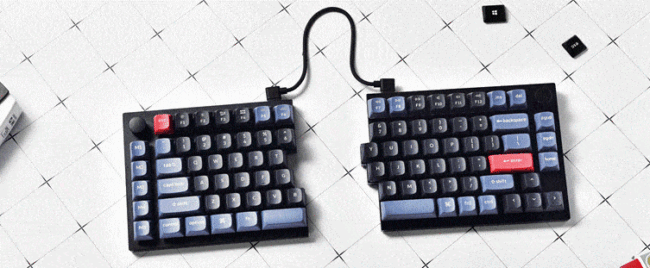
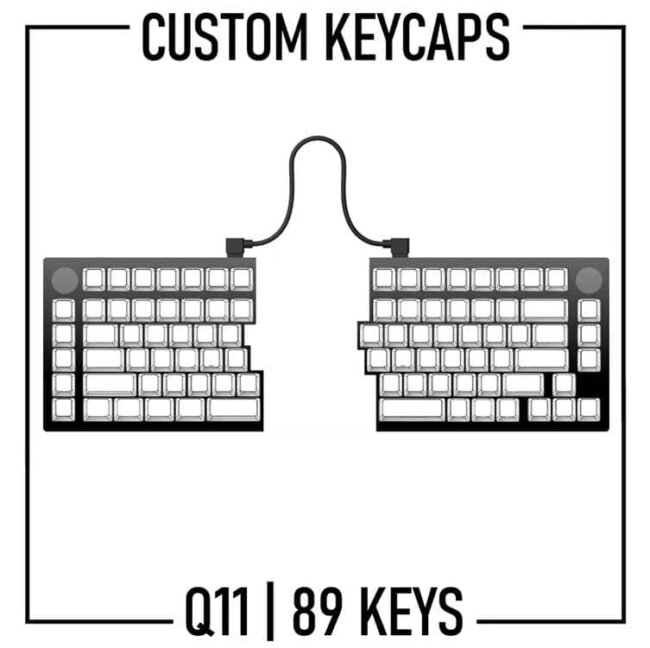
Essentially, the world of keyboard customization goes beyond mere functionality. This is an area where form meets function, personalization meets innovation. By choosing each layout, you can create an experience that matches your typing style, ergonomic needs, and aesthetic preferences. Whether you choose the familiar or venture into unique design territory, your journey to personalize your mechanical keyboard is a symphony of choices that resonate with your personality.
When it comes to selecting keycaps for your personalized mechanical keyboard, the choice of material plays a pivotal role in shaping your typing experience. Among the diverse options available, PBT (polybutylene terephthalate) keycaps stand out as a popular and reliable choice, known for their durability, texture, and overall quality.

Durability and Longevity
One of the primary reasons enthusiasts gravitate towards PBT keycaps is their exceptional durability. Unlike their ABS (acrylonitrile butadiene styrene) counterparts, PBT keycaps are more resistant to wear and tear, ensuring that the legends (the characters on the keycaps) remain clear and crisp even after extensive use. This resilience makes PBT keycaps an ideal choice for keyboards that are meant to stand the test of time.
Textured Comfort
PBT keycaps boast a distinct texture that contributes to a satisfying typing experience. The surface of PBT keycaps is slightly rougher than that of ABS keycaps, offering a tactile feedback that many users find enjoyable. This texture adds a layer of comfort to each keystroke, enhancing the overall typing sensation.
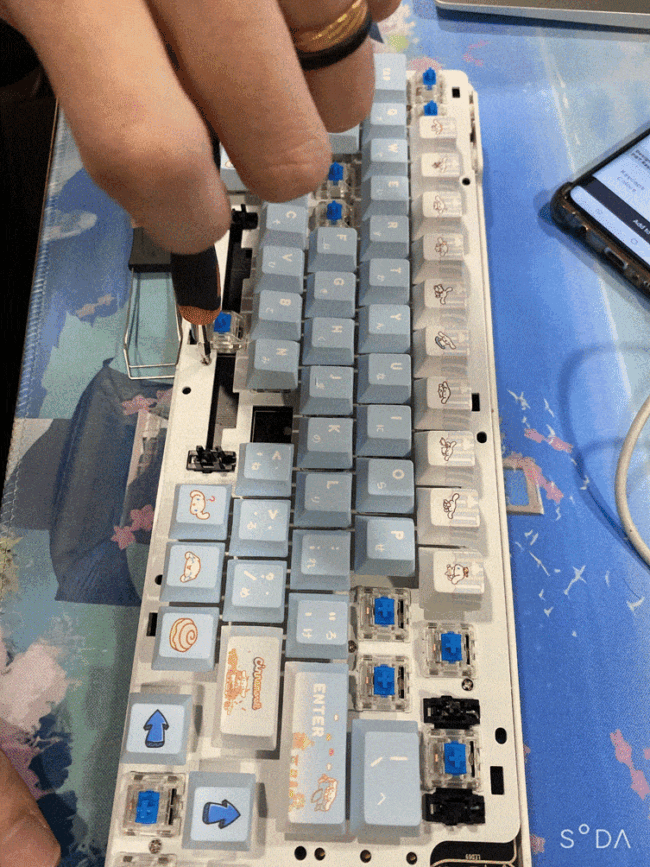
Resistance to Shine and Grease
An additional advantage of PBT keycaps is their resistance to shine and grease buildup. Over time, repeated contact with fingers can cause the surface of keycaps to become shiny and develop a polished appearance. PBT keycaps, however, are less prone to this issue, maintaining their original matte finish even after extended use. Additionally, their resistance to grease ensures that fingerprints and oils don’t easily accumulate on the keycaps.
Customization and Compatibility
PBT keycaps are highly customizable, allowing users to explore various colorways, legends, and styles. This opens up a realm of possibilities for creating a keyboard that’s not only functional but also a reflection of your personal aesthetic. Furthermore, PBT keycaps are compatible with a wide range of switch types and layouts, making them versatile options for various keyboard configurations.
In summary, opting for PBT keycaps is a strategic decision that aligns with a desire for durability, texture, and customization. With their remarkable resistance to wear, comfortable texture, and compatibility with various layouts, PBT keycaps transform your mechanical keyboard into a tactile canvas that stands the test of time.
Selecting the appropriate switches for your personalized mechanical keyboard is a decision that significantly influences your typing experience. Among the plethora of options available, a few common switches have gained prominence for their distinct characteristics and versatility.
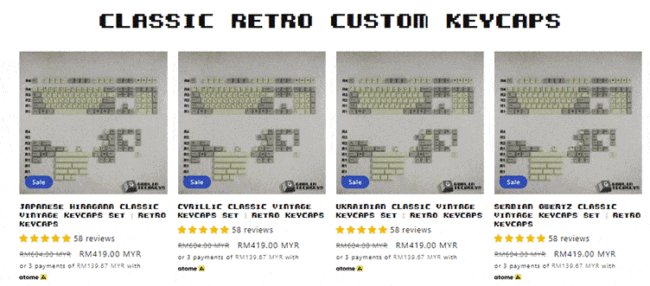
Cherry MX Switches
Cherry MX switches are often considered the quintessential mechanical switches, setting the standard for the industry. They come in various types, each identified by a colour that corresponds to a specific tactile or linear feel. For instance, Cherry MX Red switches offer a smooth and linear keystroke, while Cherry MX Brown switches provide a tactile bump without the audible click. Cherry MX Blue switches, on the other hand, offer a tactile bump along with a distinctive click sound. These switches cater to a range of preferences, from gamers seeking precise keypresses to typists valuing tactile feedback.

Gateron Switches
Gateron switches are renowned for their smooth keystrokes and relatively lighter actuation force. They are often compared favourably to Cherry MX switches, with some enthusiasts preferring Gateron for their improved feel. Similar to Cherry MX switches, Gateron switches come in different variants, such as Gateron Red (linear), Gateron Brown (tactile), and Gateron Blue (tactile with a click).
Kailh Switches
Kailh switches are known for their affordability and diversity. They offer a range of options, including linear, tactile, and clicky switches. Kailh switches have gained popularity in the mechanical keyboard community for their budget-friendly pricing and the ability to choose switches that suit individual preferences.
Ultimately, the choice of switches depends on your typing style, tactile preference, and even the auditory feedback you seek. Each switch type offers a unique typing experience, and the decision comes down to whether you prefer a smooth linear action, a tactile bump, or an audible click. As you embark on this journey, experimenting with different switches can lead you to the one that harmonises perfectly with your fingers and enhances your overall keyboard experience.
Concluding the exploration of personalized mechanical keyboards, we venture into the realm of choosing the ideal mechanical case—a decision that encapsulates both aesthetics and functionality. Among the array of options, several common mechanical case types have emerged, each offering a unique blend of design, material, and form.
Aluminium Cases
Aluminium cases stand as a hallmark of premium craftsmanship, combining sleek aesthetics with durability. These cases exude a sense of sophistication and are often CNC-machined for precision. The use of aluminum not only provides a robust structure but also acts as a heat sink, dissipating heat generated by prolonged typing sessions. This makes aluminium cases an excellent choice for those who seek both elegance and efficient cooling for their keyboard components.
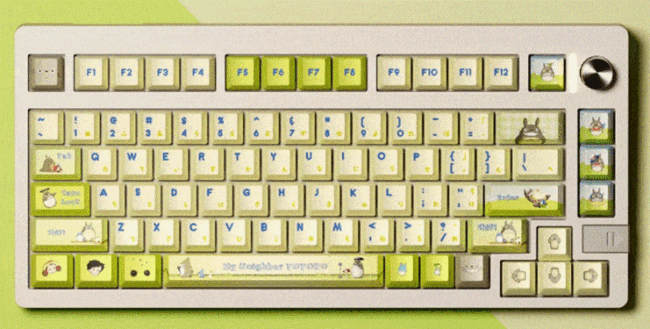
Plastic Cases
Plastic cases offer a diverse range of design possibilities, catering to both budget-conscious enthusiasts and those seeking unique aesthetics. ABS plastic cases are common and come in a variety of colours, allowing for vibrant customization. PBT plastic cases, known for their textured finish and durability, provide an alternative that appeals to those who prioritise both feel and visual appeal.
Wooden Cases
For a touch of nature-inspired elegance, wooden cases present an option that marries functionality with rustic charm. Wooden cases, often made from materials like walnut, maple, or bamboo, infuse keyboards with a warm and inviting ambiance. These cases offer a departure from traditional materials and are favored by those who appreciate a unique blend of craftsmanship and natural aesthetics.
Acrylic Cases
Acrylic cases provide a modern and transparent twist to keyboard design. These cases showcase the intricate components of your keyboard, offering a visual spectacle that highlights the inner workings of your customization. Acrylic cases are available in a variety of thicknesses and styles, enabling users to experiment with a range of designs while enjoying the contemporary appeal of translucent materials.
Metal Cases
Apart from aluminum, metal cases encompass a range of materials such as steel, brass, and zinc. Metal cases exude a sense of sturdiness and elegance, often providing a premium touch to the keyboard’s overall appearance. The weight and resonance of metal cases contribute to a tactile and auditory experience that resonates with enthusiasts seeking a specific feel and sound profile.
In the grand finale of crafting a personalized mechanical keyboard, the choice of mechanical case culminates in a creation that embodies both your aesthetic preferences and functional requirements. Whether you’re drawn to the elegance of aluminum, the versatility of plastic, the earthy charm of wood, the modernity of acrylic, or the robustness of metal, the case you choose becomes the literal and metaphorical foundation that holds your customized masterpiece together. With each keypress, the case resonates with your touch, creating a harmonious symphony that encapsulates the artistry, innovation, and individuality inherent in your personalized keyboard journey.
In summary, this article on “Building Your Own Mechanical Keyboard…the Right Way” provides valuable insight into the world of custom mechanical keyboards. It emphasises the balance between personalization and budget while walking viewers through the process of selecting, building, and customizing the ideal keyboard. We should be more encouraging beginners and enthusiasts to embark on the meaningful journey of creating their own unique, bonded experience. Whether looking for a basic introduction or a deep dive into advanced modifications, this video provides a comprehensive overview of the steps and considerations involved in crafting a mechanical keyboard that suits your personal preferences.
